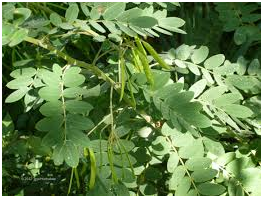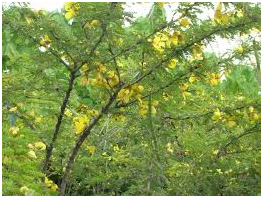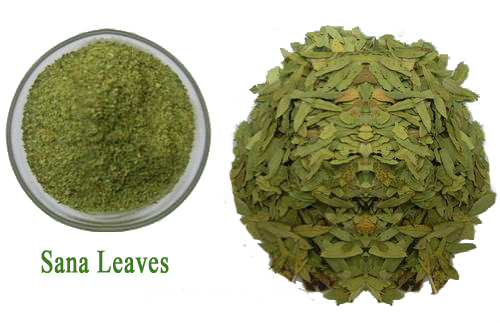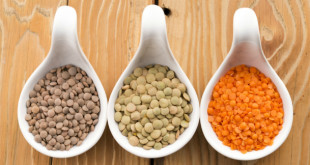Names
Rasool Allah صلی اللہ علیہ وسلم’s guidance about it
Arabic words written in below references are the words mentioned in respected Hadees. You can confirm the references of Hadees at sunna.com & Al-Maktab Al-Shamilah (المكتبة الشاملة) also.
Merits of Sanna
1. Hazrat Asma Bint Umaiz رضي الله عنها (wife of Hazrat Abu Bakr رضي الله عنه) says that Rasool Allah صلی اللہ علیہ وسلم asked her “What do you use as a Tastamsheen (تستمشين) (laxative) she replied “Shabram” (الشبرم) (spruge). Rasool Allah صلی اللہ علیہ وسلم said it is hot & powerful. (حا”ر حا”ر), She said then I used Sanna (senna) (السنا) as a Tastamsheen (تستمشين) (laxative). And she said that Rasool Allah said “If there would be cure (شفاء) for death (الموت) it would be Sanna (Senna) (السنا). : Reference Tirmizi: 2225; Book No. 28; In English volume no.4 Book 2, Hadees no 2081. Shabram (spruge) is explained at the end of this column.
Sanna & Sanoot, cure for every diseases
2. Ibrahim Bin Ablah heard Abu Bin Umm Haram رضي الله عنها says that Rasool Allah صلی اللہ علیہ وسلم said that “For you Sanna (senna) (السنا) & Sannoot (السنوت) (Dill or else) is present, these have cure (شفاء) for all diseases except Saam (السام) (death), to this, he asked, to Rasool Allah صلی اللہ علیہ وسلم what is Saam (السام) Rasool Allah صلی اللہ علیہ وسلم replied Maut (الموت) (death). : Reference Ibn Ma-jah: 3584; Book no. 31; In English volume no. 4; Book 31, Hadees no 3457.
3. Hazrat Abu Ayyub Ansari رضي الله عنه says that Rasool Allah صلی اللہ علیہ وسلم said Sanna (senna) (السنا) & Sannoot (السنوت) (dill or else) are medicines (دواء) for all diseases. : Reference Kanz al-Ummal: 28270 & Baihaqi: 20065.
4. Hazrat Anas Bin Malik رضي الله عنه says that Rasool Allah صلی اللہ علیہ وسلم said “There is cure (شفاء) in 3 things except Saam (السام) (death), Sanna (Senna) (السنا), Sannoot (السنوت) (dill or else) the third one is not mentioned due to forgetfulness. : Reference Kanz al-Ummal: 28269.
(Four)4 best treatments
5. Hazrat Abdullah Bin Abbas رضي الله عنه says that Rasool Allah صلی اللہ علیہ وسلم said “Amongst the treatment you do, the best is to put medicine (دواء) in nose (السعوط), to put medicine (دواء) in one side of mouth (اللدود), Hijamah (الحخامة) (Cupping) & Walking (laxatives) (المشى). : Reference Tirmizi: 2184; Book No. 28, In English volume no.4; Book 2, Hadees no 2047.
(Walking here is considered as movement of intestines by Imam Qayyim (r) and senna increases the movement of intestines. (Movement of intestines is called as Peristalsis movement is medical terms).
Content of it
Scientific benefits of it
2. Increases movement of intestines (peristalsis)
3. Useful in piles due to laxative.
4. Its paste can be applied on wounds & ulcers.
5. It is anti helmentic (anti worms)
6. Reduces obesity.
7. Useful in hypertension & increased in intra cranial pressure (brain pressure)
8. Increases appetite.
9. Helpful in dysentery, hepatomegaly, spleenomegaly, malaria, jaundice, gouts, rheumatism, anaemia & etc.
10. But use in mild dose.
11. Can be used in all season.
Contraindications
Dill is sowa.
Science & Hadees regarding Sanna
Sana Makki (senna leaves) is a true miracle of Allah’s creations & it is one of the valuable herbs of Tib-e-Nabwi, In Hadees of Ibrahim Ibn Abi Laila رضي الله عنه narrates that Rasool Allah صلی اللہ علیہ وسلم says necessarily use Sana and Sanoot; because there is a cure in both of them from every disease except the “saam” someone asked ya Rasool Allah صلی اللہ علیہ وسلم what is saam? He Replied, Death. (Reference Ibn Ma-jah Hadees: 3457).
When you take sana alone, it may creates pain in the stomach which is caused due to contraction of stomach / intestinal walls, the contraction itself results in separation of old toxins & layers of putrefied un-digested food. Prophet صلی اللہ علیہ وسلم directed to take Sana with “SANOOT”. About Sanoot there is several opinions (1) honey. (2) Zeera (3) sonf/badiyan. So the best is to take with honey which is mixed with butter.
It leaves are very effective laxative and purgative and are particularly useful remedy for the occasional bout of constipation and is useful for evacuation relief in cases of fissures, hemorrhoids, after recto anal operations, and in preparation of diagnostic intervention in the gastrointestinal tract. It irritates the lining of the large intestine, causing the muscles to contract strongly resulting in bowel movement in about 10 to 12 hours after ingestion and also stops fluid being absorbed from the large bowel helping to keep the stool soft. It is sure and safe even for children (over 12 years of age) and weak and elderly persons. To prevent griping pains in the intestines, it is best when combined with a smaller amount of a warming stimulant and antispasmodic such as ginger or some other suitable herb. Sana leaves are approved by the World Health Organization (WHO) for short-term use in occasional constipation. Senna is also approved in the United States and in European countries as an ingredient in over-the-counter and prescription laxative preparations. The herb is approved by the German government for any condition in which alleviating constipation or softening stools is desirable
Clinical studies suggest that Senna is effective in managing constipation associated with a number of causes including surgery, childbirth, and use of narcotic pain relievers. A study in the medical journal Diseases of the Colon and Rectum showed that Sana was able to prevent or treat postoperative constipation after proctologic surgery. The South African Medical Journal shows that treatment with sanna was successful in 93%-96% of women suffering from postpartum constipation. By comparison, only 51%-59% of women in the placebo group experienced relief. Sana is considered to be one of the more effective agents for relieving constipation caused by such narcotic pain relievers as morphine. In another study published in the Journal of Pain and Symptom Management, researchers recommended the use of sanna in terminal cancer patients with opiate-induced constipation, citing the effectiveness of the herb and it’s relatively low cost. A study published in the medical journal Pharmacology suggests that a combination of sanna and bulk laxatives can alleviate chronic constipation in geriatric patients. It is also useful in intestinal worms, rheumatism, sciatica, gout, hip pain and lumbago
Conclusion of Hadees
1. Senna is a gentle laxative; there is healing in it for all disease except death.
 The Tibb-e-Nabvi The Tibb-e-Nabvi
The Tibb-e-Nabvi The Tibb-e-Nabvi






